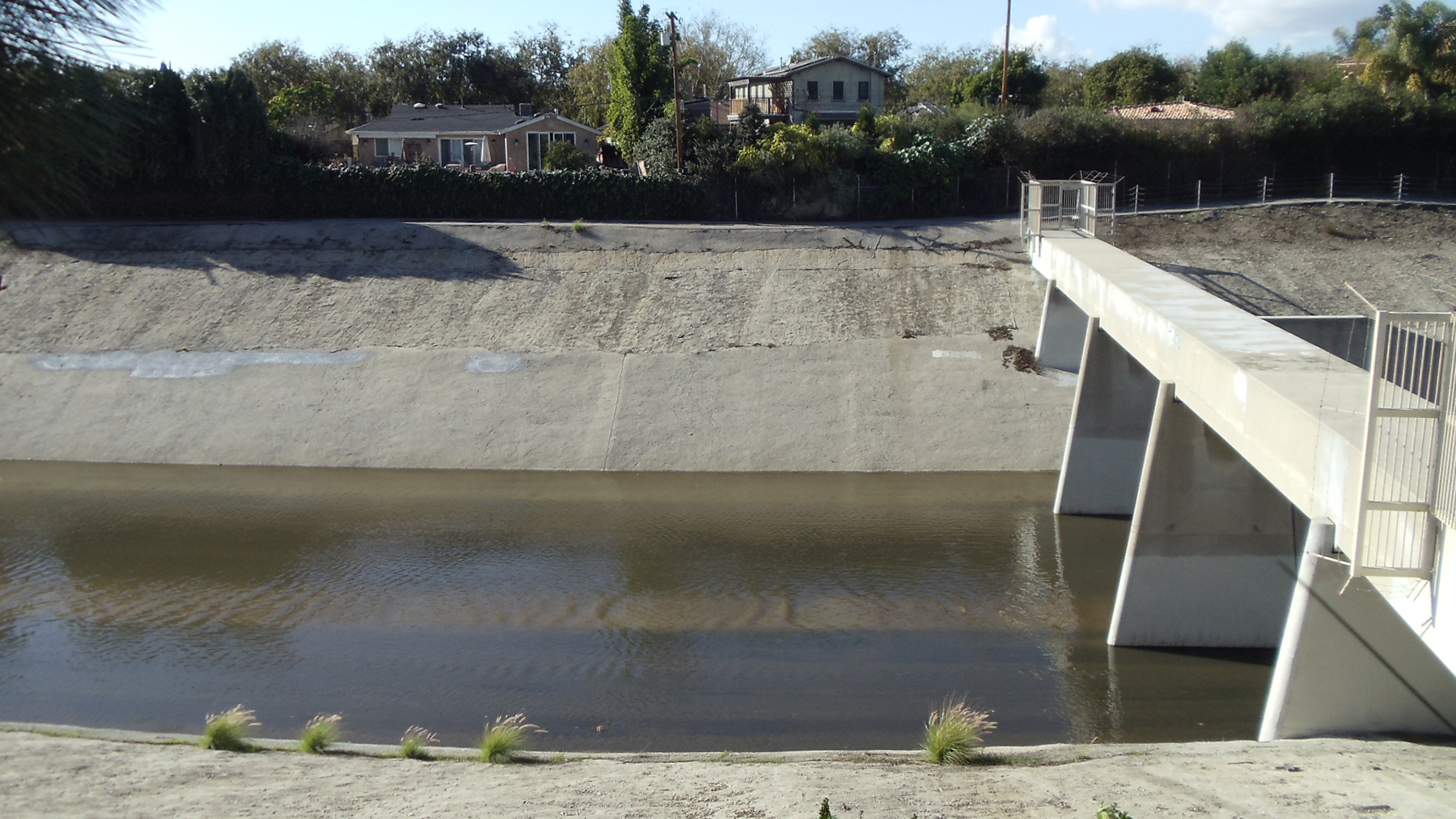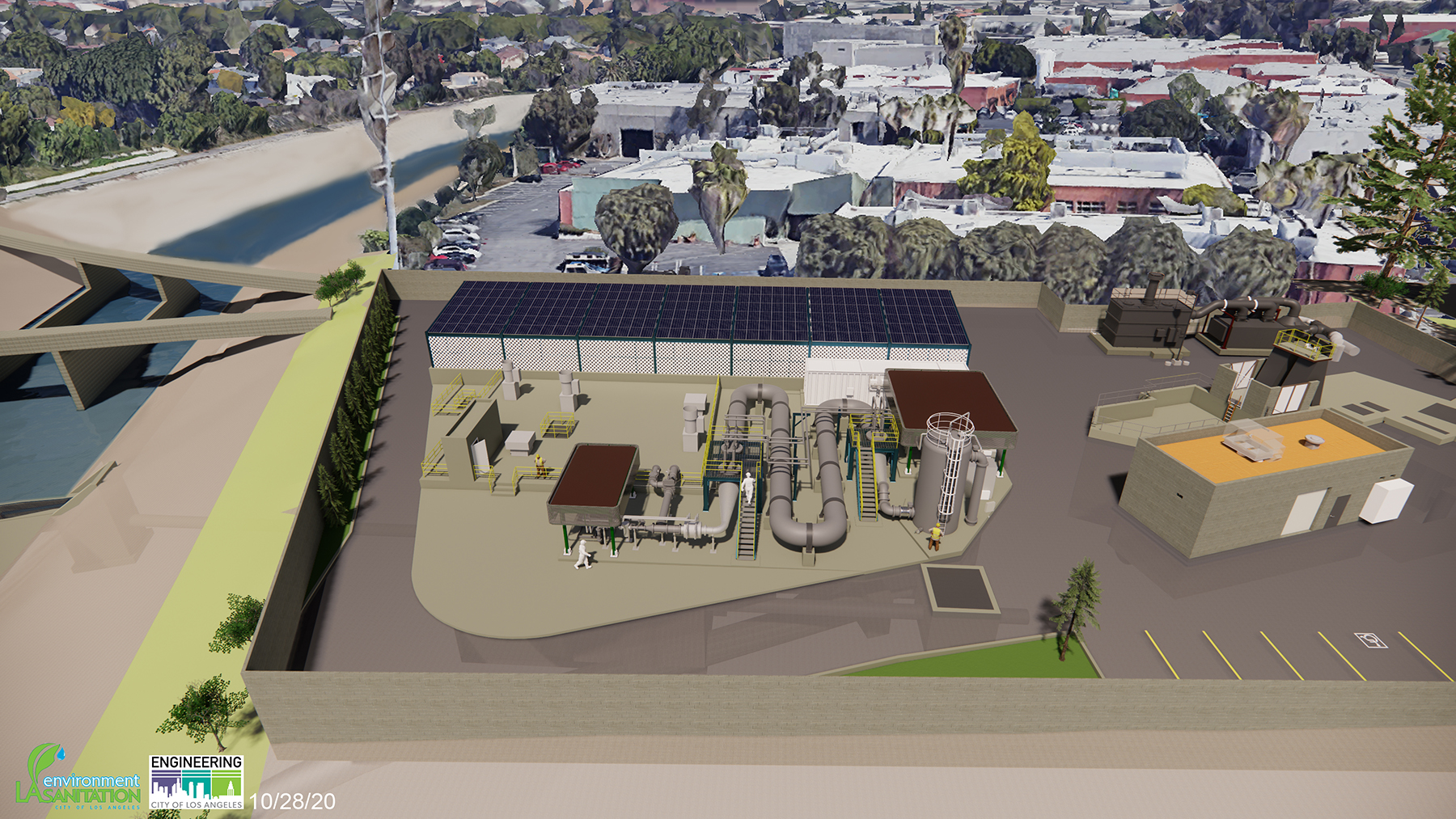By Jay Landers
Waterways within the densely populated, heavily developed Los Angeles metropolitan area often suffer from multiple water quality impairments, particularly as a result of dry weather runoff. At the same time, the Los Angeles region relies heavily on imported water sources, in some cases from hundreds of miles away. In a bid to address these problems, on at least a small scale, the city of Los Angeles and several local partners have teamed up on a novel approach. The city will treat some dry weather flows within its major watershed and divert much of the rest to the Hyperion Water Reclamation Plant.
Ultimately, the effort is expected to improve local water quality, protect public health, and increase the output of recycled water, helping offset some of the region’s potable water demands.
Targeting bacteria
The Ballona Creek Total Maximum Daily Load Project targets water pollution within the approximately 130 sq mi Ballona Creek watershed, which includes the cities of Beverly Hills and West Hollywood and large portions of Los Angeles, Culver City, Inglewood, and Santa Monica as well as unincorporated areas within Los Angeles County. Impervious surfaces cover 49% of the highly developed watershed, which consists of mostly residential development.
From its start in mid-Los Angeles, Ballona Creek flows for 10 mi in a southwesterly direction, passing through Culver City before emptying into the Santa Monica Bay near the community of Playa del Rey. Like many waterways in the Los Angeles region, Ballona Creek was converted into an open concrete channel for flood control purposes decades ago. Although the upper 7 mi of the channel is lined completely in concrete, the final 3 mi features a soft bottom and concrete sides. This lower section of the channel comprises the Ballona Creek Estuary.

Once a natural stream, today Ballona Creek is “mostly fed by an immense network of underground storm drains,” says Brett Perry, P.E., an environmental engineering associate for LA Sanitation & Environment, referred to as LASAN. On an average dry weather day, these sources direct approximately 11 mgd to the channel. The significant volumes of urban runoff entering Ballona Creek and its tributaries contribute a host of pollutants, including trash, metals, pesticides, and bacteria, to the waterway.
To address these water quality concerns, multiple TMDLs have been established for Ballona Creek. A TMDL entails a regulatory determination of the maximum load of a pollutant that is allowed to enter a water body. Under the Clean Water Act, states are required to develop TMDLs for water bodies found to be impaired. In 2006, the Los Angeles Regional Water Quality Control Board established a TMDL for bacteria in Ballona Creek, the Ballona Creek Estuary, and the Sepulveda Channel, a tributary of Ballona Creek. Amended in 2012, the bacteria TMDL was approved by the U.S. Environmental Protection Agency in 2014.
Regional cooperation
Runoff entering Ballona Creek contains bacteria from natural and anthropogenic sources, says Wendy Dinh, an environmental engineering associate for LASAN. Wildlife and soil erosion contribute bacteria, as do myriad human sources, including car washing, littering, and overwatering during landscape irrigation.
To ensure compliance with the bacteria TMDL, the city of Los Angeles and six local partners — Los Angeles County, the Los Angeles County Flood Control District, and the cities of Beverly Hills, Culver City, Inglewood, and West Hollywood — have developed a “watershed-wide strategy,” Perry says.
The resulting project highlights regional cooperation at its best, says Michael Scaduto, P.E., ENV SP, M.ASCE, a principal engineer for LASAN. “It’s really hard to tackle water quality urban runoff issues, especially when it crosses (political) boundaries,” Scaduto says. “What you’re seeing here is really a comprehensive regional effort where all the agencies are working together, understanding that this is a real problem.”
Three facilities
To this end, the various entities plan to construct two low-flow facilities to treat dry weather flows from Ballona Creek and Sepulveda Channel and return the treated water to the waterways. The facility on Ballona Creek also will divert up to 23 mgd of dry weather flows to the Hyperion WRP. Based on the average daily flow in Ballona Creek, an estimated 5,060 acre-ft/year of water will be diverted for recycling.

LASAN is overseeing implementation of the two treatment facilities. A third facility, to be overseen by Culver City, will divert nearly 1 mgd of dry weather flow from another tributary of Ballona Creek to Hyperion.
The design of the two facilities under the purview of Los Angeles has been conducted by the Bureau of Engineering within the city’s Department of Public Works. The 100% design was recently completed, Perry says, and the Bureau of Engineering plans to solicit construction bids later this year. Construction is expected to begin in the first half of 2022 and take two years.
Treating low flows
The larger of the two low-flow treatment facilities to be constructed by Los Angeles is known as Low Flow Treatment Facility 1. To be located adjacent to Ballona Creek, LFTF 1 will serve a drainage area of approximately 54,808 acres. To divert dry weather flows to the facility, a channel will be cut in the bottom of the creek perpendicular to its flow, Perry says. The facility will include a lift station having five pumps and a maximum capacity of 29 mgd.
Ozone generated on-site will be used to disinfect up to 6 mgd of dry weather flows from Ballona Creek. “The target is to reduce E. coli from about 10,000 (the most probable number of colony units) per 100 ml to less than 50,” Perry says. “Disinfected water will be returned to Ballona Creek to support downstream beneficial uses and ensure that bacteria standards throughout the entire watershed are met and maintained.”
Meanwhile, dry weather flows diverted into the LFTF 1 in excess of 6 mgd will not undergo disinfection. Instead, such flows will be sent to the nearby North Outfall Sewer, a major trunk line that conveys wastewater to Hyperion. The sewer is close enough that LASAN will need to install only about 100 ft of pipe to connect it with the treatment facility, Dinh says.
As it happens, the LFTF 1 will be located at the site of an abandoned facility once used by Los Angeles to treat sanitary sewer overflows from the North Outfall Sewer. “It’s a great opportunity that we have now,” Perry says. “We’re able to upgrade the abandoned infrastructure and operate a new project scope that is much more friendly to the environment and the public health and to the local water supply.”
Determining how much dry weather flow should be treated and released back to Ballona Creek and how much should be diverted to Hyperion was not a straightforward process, Scaduto says. As it sought to maximize the volume of flows going to Hyperion, LASAN also had to ensure that sufficient flows remained within the waterway for environmental purposes. To this end, the design had to strike a “fine balance” between meeting the project’s water quality requirements while complying with regulations to protect aquatic life downstream in the Ballona Creek Estuary, Scaduto says.
Dry weather runoff only
Known as the LFTF 2, the second low-flow treatment facility will be constructed beside the Sepulveda Channel. Designed to serve a drainage area of approximately 16,654 acres, the LFTF 2 is much smaller than its counterpart on Ballona Creek. It also will divert dry weather runoff from the waterway by means of a perpendicular cut in the channel bottom. Flows diverted in this fashion will be directed to a lift station having two pumps and a maximum design capacity of 1.3 mgd.
The water will undergo disinfection by ozonation and then be returned to the Sepulveda Channel. “It’s the same general strategy (as LFTF 1), but there’s no diversion to the sewer because there’s no sewer system nearby that’s already built out that could handle any large amount of water,” Perry says.
Culver City’s project, the Mesmer Low Flow Diversion, is the smallest of the three facilities, as it serves a drainage area of approximately 6,145 acres. The Mesmer project will entail retrofitting a sewer pump station adjacent to Centinela Creek, another tributary of Ballona Creek. “As part of the retrofit, a 30 ft long microtunnel will be installed under the channel to convey up to 0.96 mgd (of dry weather flows) from Centinela Creek to Hyperion for beneficial reuse,” Dinh says. No treatment will be conducted at the facility.
None of the three facilities will operate during wet weather periods, Perry says. However, such periods are few and far between in this region. “Dry weather is usually more than 330 days of the year,” he says. As a result, the water quality benefits from the low-flow treatment facilities “will be seen for the vast majority of the entire year,” Perry says.
New approach
To date, Los Angeles has constructed 27 low-flow diversion facilities to accept dry weather runoff within the watersheds of Santa Monica Bay and the Los Angeles River, Perry says. “They have had notable improvements in receiving water quality,” he notes. However, the installations only divert flows to the sanitary sewer system. “Those are not treatment facilities,” Perry says.
Because it treats and releases dry weather flows while also diverting flows to the sewer system, the LFTF 1 represents a new approach by the city for handling urban runoff, Perry says. The facility is a “novel and unique mix of low-flow diversion technology, ozone treat-and-release technology, and, of course, diversion to sewer application for downstream water supply benefits,” Perry says. “It will lead to exciting water quality, water supply, and community benefits for the entire watershed.”



